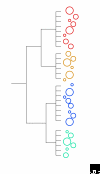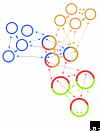Genomics and the bacterial species problem
- PMID: 17020593
- PMCID: PMC1794555
- DOI: 10.1186/gb-2006-7-9-116
Genomics and the bacterial species problem
Abstract
Whether or not bacteria have species is a perennially vexatious question. Given what we now know about variation among bacterial genomes, we argue that there is no intrinsic reason why the processes driving diversification and adaptation must produce groups of individuals sufficiently coherent in their genetic and phenotypic properties to merit the designation 'species'--although sometimes they might.
Figures



References
-
- Franklin L. Bacteria, sex and systematics. Philosophy of Science. 2006.
Publication types
MeSH terms
LinkOut - more resources
Full Text Sources

